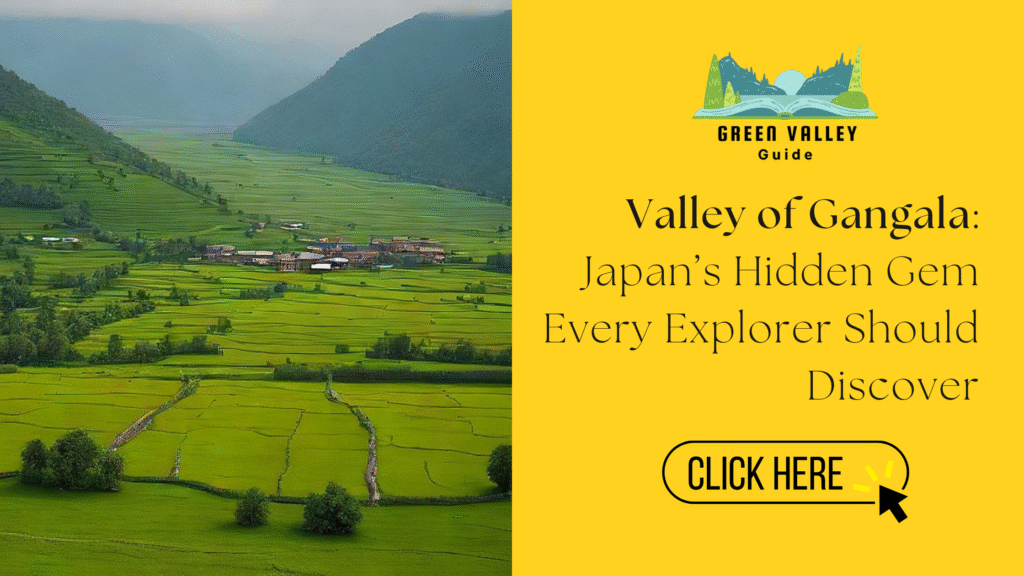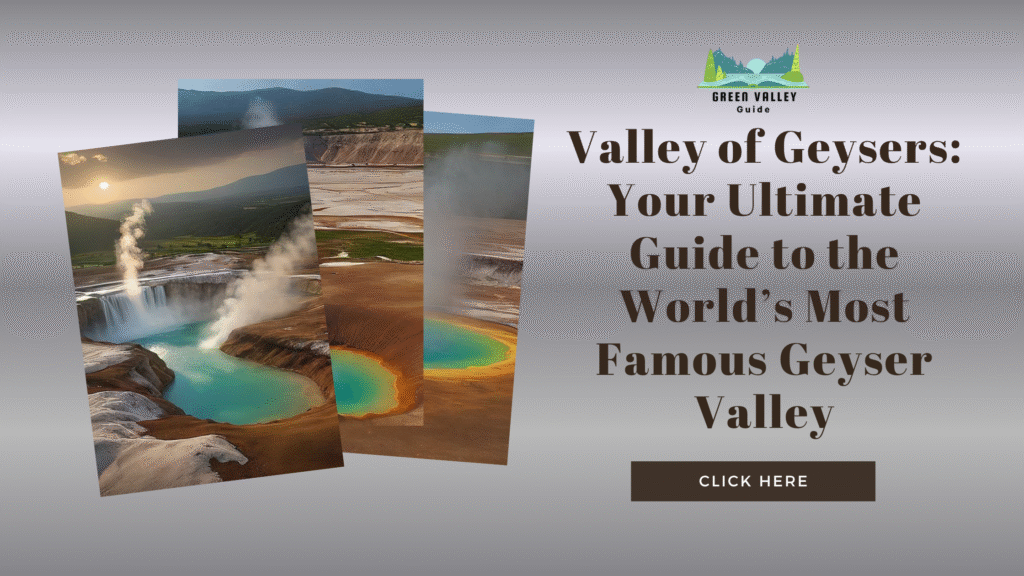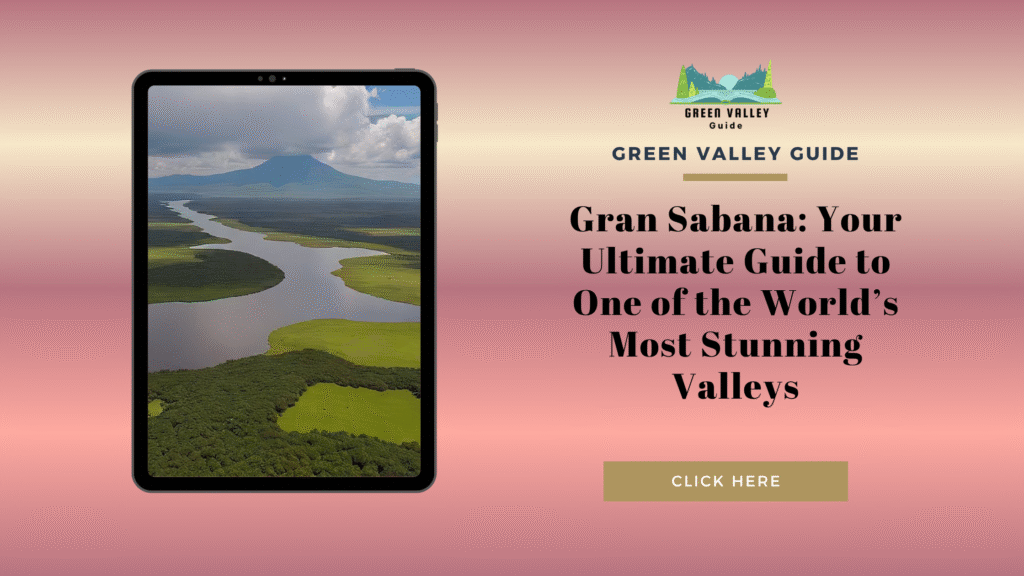Table of Contents
Introduction: Unveiling the Valley of Gangala — Okinawa’s Underground Wonder
Consider the feeling of visiting a green, long valley that was created due to the fall of a cave made of limestone, where the banyan trees reach to the sky, and where the sacred stones carry the sound of prehistoric existence. This is the Gangala Valley, which is one of the least travelled but still one of the most magical places of Okinawa.
Hidden in the south of the city of Naha, the Valley of Gangala is not a usual tourist destination. It is a breathing and living ecosystem with nature, archaeology, and spirituality in harmony. The jungle masked ravine is a cave that used to be vertical, and over the millennia, the natural fall has eroded it and converted it to a forest canyon. Nowadays, it is the place where distinct limestone formations, ancient sanctuaries, and even a coffee shop hidden in a cave reside.

To nature lovers, it is a retreat to the subtropical greenery. To people in search of culture, it opens up spiritual origins and archeological discoveries, including those that are more than 20,000 years old. And to anyone who might be feeling like something more than the typical Okinawa sightseeing, the Valley of Gangala will provide an unforgettable experience in terms of beauty, history, as well as mystery.
You will read it all in this guide about going to the Valley of Gangala:
- Location and accessibility to it
- What is geologically and culturally special about it?
- The expected tour is on the guided tour
- Things to look out for as you go along the trail
It is an adventure in time, whether you are travelling solo or with the family and going navigating around Okinawa, this hidden attraction is like taking a trip back in time, it is very down-to-earth and awe-inspiring at the same time.
Where Is the Valley of Gangala? A Hidden Treasure in Okinawa, Japan
The Valley of Gangala is hidden on the very bottom of the Okinawan Island, just outside Nanjo Cityand fully disappears into the subtropical scenery. It has a remote jungle vibe, but it is conveniently physically placed: only some 30 minutes away by car in case you are staying in Naha.
Its valley is immediately adjoining a popular Okinawa World theme park, which houses a famous Gyokusendo Cave, and it is not a problem to visit both amazing things in a day. However, although Okinawa World attracts lots of people, the Valley of Gangala is an isolated, spiritual place that is not visible.
How to Get There:
- By car: 30 minutes approximately to the Naha Airport, free parking aids are provided on site.
- By bus: A local bus service (No. 54 or 83) is available to the stop called “Okinawa World.” The entrance into the valley is a short walk away.
- Through Tours: There are several local tour firms and hotels that have offered tours with transport and entry costs consolidated.
How the Valley of Gangala Was Formed: Nature’s Ancient Masterpiece
The Valley of Gangala is present to date due to a strong process that occurred thousands of years ago. The former huge limestone cave system gradually disintegrated over a period of time, which left the forest floor exposed and caused the valley-like topography present currently.
When the cave roofs collapsed, nature took the reins. The valley was now a subtropical jungle, and the winding paths and vines that hung overhead, the underground creek, and the high, airy limestone cliffs made it complete. Ruins had grown along with massive banyan trees whose roots penetrated the rocks as part of a fantasy novel setting.
This geological change is highly cultural and scientific in nature. Archaeologists are still digging for tools and human remains there and which show the presence of prehistoric man in Okinawa more than 20,000 years ago. The valley can be characterized as not only a natural wonder, but it is also the key to the ancient past of Japan.
Check Out: Conquering Puncak Jaya: The Ultimate Guide to Indonesia’s Majestic Peak and Valley Adventures.
Guided Tours: The Only Way to Experience the Valley of Gangala
The Valley of Gangala is a sensitive place with a delicate ecosystem and sacred places that can only be explored in a guided walking tour. This fires up the safeguarding of the land even as it provides the traveler with a better height of spiritual and historical significance.
What to Expect on the Tour:
- Your adventure begins at the Cave Caf, the coffee shop that is constructed in an actual limestone cave.
- Take open-air trails in the sacred forests, pass by walls made of limestone, fossil stones, and groves.
- Go to such places as Ishibashi Uganju, a religious temple of prayer and sacrifice.
- Get to know about archaeological excavations that have revealed some of the earliest human remains in Japan.
Tour Details:
- Languages: Japanese (supports audio guide in English, Chinese, and Korean)
- Time length range: ~1.5 hours, not fast-paced, ed, and comfortable to most fitness levels
- Booking: Book online at the official site of Valley of Gangala or buy the tickets inside the Cave Cafe at the counter
Top Attractions in the Valley of Gangala
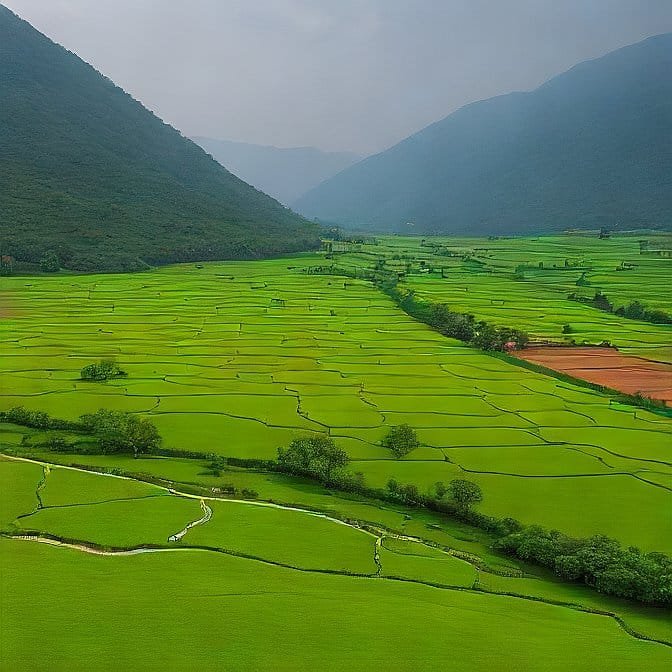
The Valley of Gangala abounds in features used to express both the strength of the power of nature and the spirituality of the indigenous culture of Okinawa. Eye-catching locations on the walking tour include the following:
1. The Café Cave
Coffee in the coffee shop of one of the most extraordinary cafes is just the right way to start the visit, because it is in the cave itself, made of limestone. The valley entrance is the amazing Cave, and it is an entrance area at the same time.
2. Ishibashi Uganju (Sacred Rock)
It is a gigantic stone, where generations of locals have been worshipping. Certainly, people continue to bring prayers here, which contributes to the spiritual atmosphere of the jungle path.
3. The Giant Banyan Tree
On top of the valley is a huge banyan tree whose roots reach up and down simultaneously. It is a well-known photography point and one of the living embodiments of the mystical power of the valley.
4. Archaeological Discoveries
Guides along the trail indicate places the ancient human bones, pieces of tools, and pottery fragments have been found, thus connecting the Valley of Gangala to one of the oldest human habitation areas in Japan.
Nature and Spirituality: Why the Valley of Gangala Feels Otherworldly
The feel that you get when walking through the Valley of Gangala is that of walking into another dimension- lush, quiet ,and filled with energy. Engulfed with massive banyan trees, plenty of lush plants, and refreshing winds generated by underground water, the valley has a sensory reset that anyone in need of nature-given peace must get.
However, that is not what makes the valley feel unreal; it is the close relation between the valley to the Okinawan spirituality. The site used to hold ritual ceremonies undertaken by people in the old days, and the natives regard the caves and rocks in this valley to be holy. Sacred rocks such as Ishibashi Uganju draw quiet contemplation and contemplation.
There are no crowds and no commercialization; he whole territory seems to be created to give an opportunity to explore it slowly, to meditate, and to walk mindfully. A mission or a traveler, the Valley of the Gangala will provide a down-to-earth yet almost spiritual atmosphere that is so hard to find in a visitor attraction destination.
When to Visit the Valley of Gangala: Best Seasons and Times
Okinawa’s subtropical climate means the Valley of Gangala is beautiful year-round, but certain times offer more pleasant conditions and richer greenery.
Best Seasons:
- Spring (March-May): Good weather, fresh green, and new shoots everywhere
- The fall (October-November): Sunny and soft weather, a decrease in insects
- Summer (June-September): verdant and wet; hot and humid – be prepared to get wet and sunburned!
- Winter (December- March): Quiet and cool, although some of the plants might not be lively
Morning vs. Afternoon Tours:
- In the morning: Slower weather, optimal lighting during photography, fewer crowds
- Afternoon: A little warmer, yet still shady,–ever so good to wander slowly along–but not hill-climbing.
What to Bring:
- Grip on feet, (paths may be wet)
- The water bottle should be reusable.
- Insect repellent (and in summer)
- Jacket, Sunscreen and face cove ,and hat when it is sunny outdoors.
- A camera to take the beautiful landscape
Nearby Attractions to Combine with Your Valley of Gangala Visit
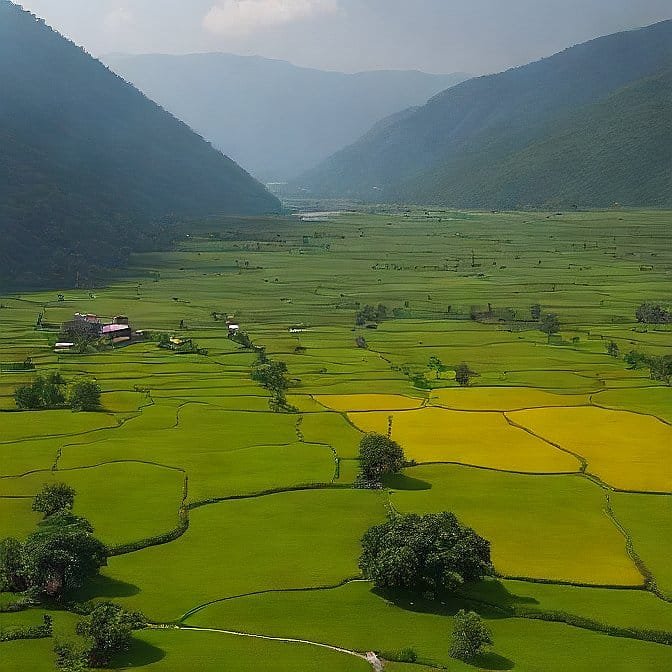
As the area of the Valley of Gangala is culturally rich in Okinawa, one can easily plan a whole day outing centering your activities around the visit.
Nearby Highlights:
- Next door: Okinawa World: The Goryu Okinawa World consists of the huge Gyokusendo Cave, a reproduction of a Ryukyuan village, a glass-blowing workshop, and a snake show.
- Shikinaen Garden (30 mins drive): A beautiful former royal garden, a combination of Chinese and Okinawan style.
- Sefa Utaki (25 mins away): It is one of the most sacred places on Okinawan Island, and it is situated on a rocky cliff with an ocean view and spiritual caves.
- Cape Chinen (one-way car ride, 20 mins): Beautiful oceanside scenic spot and serene picnic area.
Suggested Itinerary Ideas:
- Half-day: Valley of Gangalatour+ + lunch and walk in the cultural village in Okinawa World
- Full-day: Valley of Gangala and Sefa Utaki and Cape Chinen (see sunset)
Conclusion: Why the Valley of Gangala Deserves a Spot on Your Okinawa Bucket List
The Valley of Gangala is not merely a nature walk- it is an intriguing adventure in the history and spirituality of Okinawa, as well as in its geological magic. Starting with great banyan trees that grow in caves of limestone to sacred stones that sing the saga of centuries, each step you take in this valley offers you a feeling of fresh inquisitiveness and serenity.
Being either a nature lover, a history lover, or a mindful traveler in search of something deeper, the Valley of Gangala can be a place that can be called not only rare but also unique. It is not only a place where you look at nature, but it is where you feel it, hear it, and associate yourself with nature.
And therefore, when you are going to visit Okinawa, avoid the crowd and take a dip in one of the most alluring hidden treasures of Japan. And, the Valley of Gangala is waiting, not with noise, but with silent paths, mystical power, and stones telling stories in them.
For more info: Click Here.
FAQs About Visiting the Valley of Gangala
Q1: Is it compulsory to book a guided tour to visit the Valley of Gangala?
Sure, you cannot just visit the Valley of Gangala; you have to book a guided tour to enjoy its unique nature and comprehend the values and importance of the site better. The tours can be arranged online or on-site ,and the English tours are offered.
Q2: How many hours is the Valley of Gangala tour?
The average guided walking tour is approximately 1 hour and 30 minutes and encompasses approximately 1 km of well-maintained paths. It contains some stops at the cave cafe, holy places, and some ancient banyan trees, making it a leisurely yet significant trip.
Q3: Is the Valley of Gangala a place that one can travel with children or seniors?
Absolutely! The route is quite simple to walk, even children and elderly people will be able to use it, but there are some rough and wet spots. There will be a comfortable visit with the use of sturdy shoes, water, and insect repellent.

